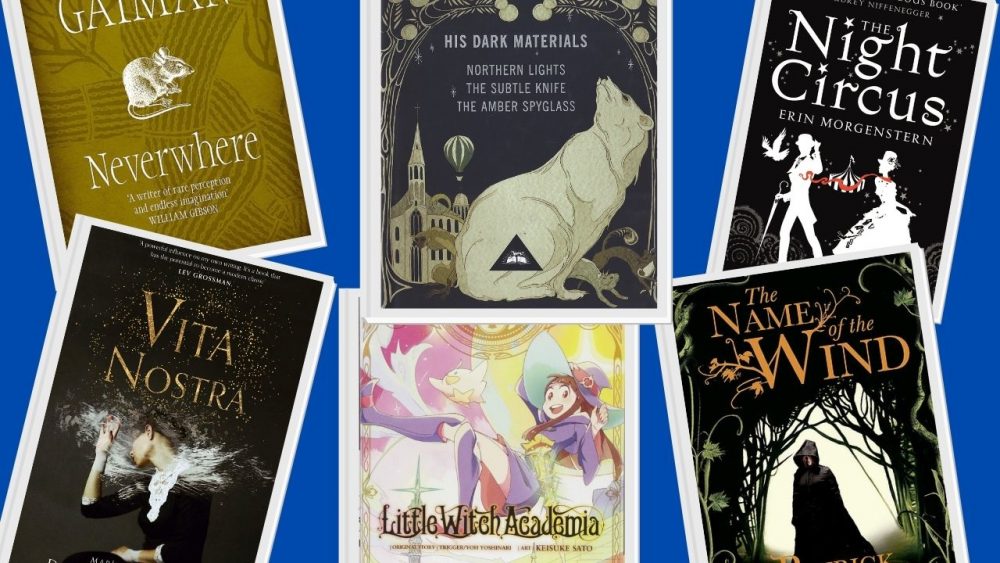Translated from the Japanese by Emily Balistrieri
Best known as one of Studio Ghibli’s most beloved movies, directed by Hayao Miyazaki back in 2003, Kiki’s Delivery Service, much like Howl’s Moving Castle, began its life as a children’s novel. But while the novel of Howl’s Moving Castle was written by a beloved Welsh author, Kiki began her life in Japan, created and written by Eiko Kadono in 1985.
Coinciding with the release of the film in the West, an English translation of the novel hit shelves in 2003. Now, however, we have a fresh new translation for 2020 by Emily Balistrieri. And what a heartfelt, warm, and sweet translation it is. Kiki, with all her tenacity, sensibility, and cleverness feels more alive than ever, and through Balistrieri’s translation Kiki’s attitude is truly infectious.

I confess to not having read the original English translation (by Lynne E. Riggs) nor to having seen the film in around five or six years, but I’m glad for that. I went into this review more-or-less totally clean and with a new eye. I was taken in by the bright cover and the hope for a fresh, lively tale. Fortunately, that’s exactly what Kiki’s Delivery Service, well, delivers.
The titular Kiki, daughter of a witch and a folklorist (a man fascinated with witch history), is a wide-eyed girl with her head in the clouds and her feet on the ground. This is what sets her apart from a lot of children protagonists: she’s very all-encompassing.
A practical girl who wakes up some days with bright ideas and hope, and others with doubt and reservations. Kiki is a three-dimensional character who follows a formulaic children’s story that avoids ever feeling tired or predictable by Kiki’s own merit.
Her approach to the situations she comes across are consistently surprising – sometimes mistakes are made; other times ingenious solutions are found.
In other words, Kiki is a girl who learns from her mistakes, from her leaps of faith, and from her yeses and her nos. Her story is not unlike that of a Pokémon trainer: at age ten a young witch must begin to decide how to spend her life.
By thirteen, Kiki has at last decided to head out on her own to find a town. Not every town has a witch, but no town has more than one; and so, Kiki must find her own town. Her mother, after all, is the local witch in her town so now Kiki must become a small fish in a big pond.
Read More: Books and Bao’s 10 Best Books of 2019
That big pond is a town called Koriko, where, when she first arrives, Kiki is made to feel unwelcome and looked on with suspicion. She has a year here before she can return home to her parents and tell them what she has achieved.
And so, with a little help from a kindly baker and her husband, Kiki is able to set up a business: Kiki’s Delivery Service, where she primarily uses her broom and her power of flight to deliver and retrieve things for others. From here, she earns the trust of locals by helping them in any way that she can, and the tasks she undertakes become stranger, more hilarious, and more challenging as the book progresses.
While it would be possible for this story to leave a sour taste — a witch, heavily judged and shunned, must prove to the locals that she is not, in fact, evil — instead the theme reads a little differently: local people learn from Kiki to be kind and accepting of others, especially those who are unusual.
This difference is really only a matter of perspective, but it is important to be read that way. And Balistrieri’s translation makes that very clear by not vilifying the locals too much and, instead, endearing us to them as much as to Kiki.
It’s doubly important to get this theme across given that this is a children’s story, where clarity of themes is vital. Another thing that’s vital is the tone and language of the book.
Children’s books with overly simplified language and a lack of expression are patronising and deeply frustrating. That’s not the case here. While it’s difficult to say what exact age range Kiki is for, since I enjoyed it thoroughly at the age of 29, it perfectly balances a formulaic plot structure, the rhythm of which is a complete joy, with storytelling that’s immersive thanks to the use of language, grammar, ideas, and expressions that are mature and do not patronise, save for a few moments where the onomatopoeia is a little forced and jarring.
The bulk of Kiki’s Delivery Service is made up of jobs that Kiki takes on, which then quickly escalate into problems, shenanigans, mistakes, and opportunities.
In one chapter, for example, she must deliver a poem and a pen as birthday presents from a secret admirer. Her curiosity about the poem leads to it being lost, and so Kiki — with the help of her talking cat familiar Jiji — must find a solution to the problem she created.
While reading this scene I remember thinking, “You’d better not mess this up, Kiki! What if these two could have ended up together forever, living happily ever after, and you ruin all of that before it begins!” So invested was I in Kiki, Jiji, and their escapades.
While each chapter in Kiki’s Delivery Service is relatively self-contained, there is a continuity that unfolds, and a delightful world that is built. Kiki’s journey passes through all four seasons, and she learns more about her new home’s history, geography, and residents as she goes. By the end, both she and the reader truly feel at home in Koriko.
What keeps the reader as invested as I was in Kiki’s journey to becoming a successful, respected, fully fledged witch is the way that it builds so carefully. Kiki, Jiji, and their family are established quickly and with just enough detail before our hero whisks herself away on an adventure.
From there, the challenges she faces escalate bit by bit. Each new task (or mistake she must fix) is a little tougher than the last and takes a little more mental or physical energy. We so vividly watch Kiki grow and learn. She becomes savvy, resourceful, quick-witted, and excited by her next challenge. Quite honestly, her attitude is infectious.
Conclusion
For young readers, Kiki’s Delivery Service delivers (sorry) a character who serves as a perfect role model. She is not perfect; Kiki’s flaws are her curiosity and her eagerness to bite off more than she can chew. But she learns and grows in a very human and not entirely smooth way.
She’s a girl with a good moral compass. Her tenacity and her curiosity go hand-in-hand, leading her over and again into and out of trouble, with Jiji sometimes serving as her conscience and sometimes being entirely voiceless and useless — as all our consciences often are.
There’s real humanity in the learning here, and not for a single second does Kiki’s Delivery Service fail in delivering (sorry) buckets of fun and unadulterated joy.



